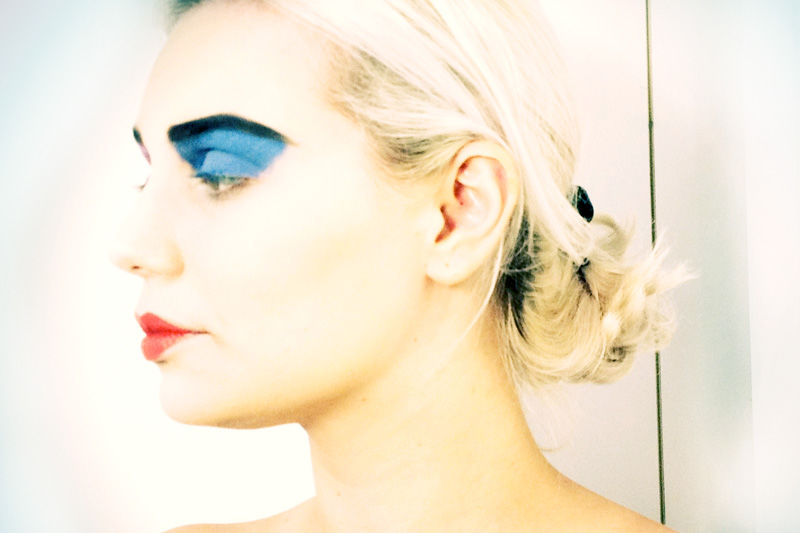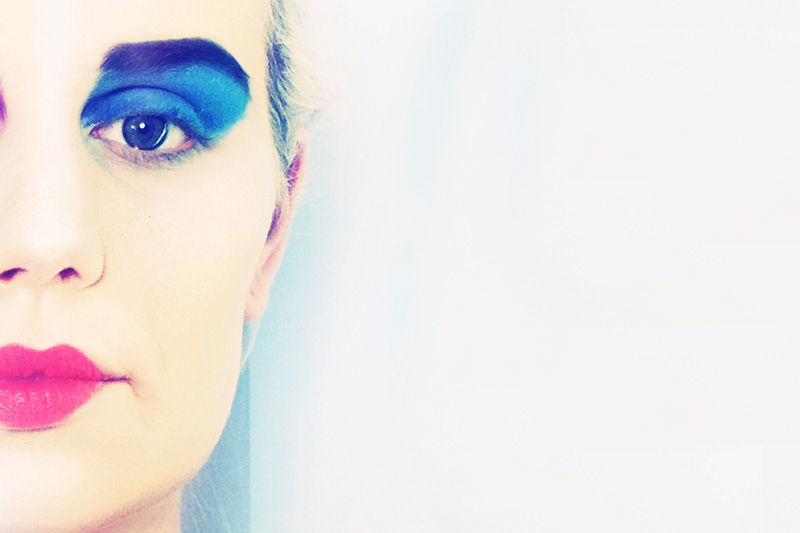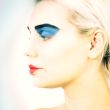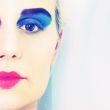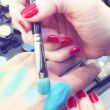The Painted Lady is a short film written and directed by Liz Goldwyn starring Jena Malone. The film will premiere in an art installation—a recreation of a 1890s brothel, replete with female performers done up as “ladies of the house”—in Los Angeles on November 3rd. Here, the LA-based artist/filmmaker gives ITG the lowdown on her research into extreme 19th century makeup habits, the film, and how she and makeup artist Gregory Arlt recreated the “painted lady” look with 21st century products.
Some background (from Liz) on the film:
'The Painted Lady is a poetic internal monologue of a young girl as she recalls a passing encounter on the street with a 'painted lady' (a slang term for a 19th century prostitute). She romanticizes an overt sexuality so foreign to her—while imagining her own transformation from adolescence into womanhood. '
Dear ITG,
I have always been fascinated by history and sexuality, particularly in women who lived outside of society’s acceptance and were disregarded as 'immoral.' I spent many years researching the history of American burlesque queens for my book Pretty Things: The Last Generation of American Burlesque (Harper Collins) and documentary film Pretty Things (HBO). My research into the world of courtesans and prostitution is a natural extension of my desire to continue examining these topics— it never gets old! The Painted Lady is the first piece in a larger historical work, which focuses on prostitution in Los Angeles in 1897.
Back in the day, only aristocrats and women with “loose” morals (i.e. “painted ladies”) dared to paint their faces. Performers, too, came under this rule. It was argued that white paint was appropriate for actresses and ballerinas lit by artificial lights, but not for proper ladies. It wasn’t until the late 19th century that the use of cosmetics and face paint had spread as far as rural America.
At this time, the most daring beauties had skin as pale as pearls and languorous, bedroom eyes. The tradition of maintaining a pale complexion became so strict that ladies were warned to avoid the harsh effects of moonlight on exposed skin. To highlight their pastiness, women artistically drew themselves additional veins with blue grease pencils or a paste made of chalk, gum-arabic, water, and blue dye. Many women used white powder to achieve their lily-white complexions. More costly forms of whitening powder were made from seed pearls dissolved in acid, followed by mother-of-pearl, oyster shells, and talc.
Eyelashes were oiled to create a dewy look and drops of belladonna, a poisonous herb, were used to enlarge the pupils. Fashionable women also bathed their eyes in prussic acid, a highly poisonous liquid, to enhance their whiteness and brilliancy. In a pinch, it was suggested that eating a sugar cube soaked in rubbing alcohol or cologne just before going to a party would brighten the eyes.
But that was then, and this is now, and no one (thankfully) is popping alcohol-soaked sugar cubes or caking on oyster-shell powder. So to achieve this pale, bright-eyed 19th century look for the models in my installation, makeup artist Gregory Arlt (MAC) used a foundation on Ashley’s face that was four shades lighter than her skin tone and then brushed MAC powder in Porcelain on top. Of course this “porcelain” powder was not made with poisonous ingredients, like in the old days. Can you imagine that women used to go to “enameling studios” to have lacquer or paint—made from ingredients including bismuth, lead and mercury—applied to their face?! It was well known that the absorption of lead resulted in convulsion of the limbs, while mercury led to excessive salivation, if not a loss of teeth. This did not stop their use, as these metallic elements were unsurpassed in achieving whiteness and brilliancy of the skin. Thank goodness we can now “get the look” with some simple foundation and powder!
Women who were unable to afford luxury goods rubbed their faces with breadcrumbs, ate chalk, slate and tea grounds, sucked on lead pencils, sipped vinegar or were bled! These were all promoted as techniques to reach an ever-paler ideal. Without government regulation, an odd mix of Baronesses, actresses, physicians and hairdressers endorsed various cosmetics as the “least harmful.”
Ladies of “ill repute” resorted to home-kitchen remedies to paint their faces, burning cork to paint on thick eyebrows, and repeatedly biting their lips and pinching their cheeks to achieve a rosy glow—suffering for beauty is a timeless pursuit!
For my “painted ladies,” Gregory created a thick black eyebrow using MYSTERY eyeshadow by MAC and highlighted the brow definition with MAC Shivering White Studio Fix. We layered on the shadow until I felt it was appropriately the dimension of burnt cork rubbed across eyesbrows as the painted ladies would have done. To make the brows even more dramatic we opted against mascara, a beauty product unavailable at the time. I actually think it’s a chic look!
Because the painted face of streetwalkers and actresses at the end of the 19th Century was considered vulgar to the extreme, we decided to use bright blue and green cream shadows to create an “artificial” look—one that calls to mind the poisonous ingredients used in commercial cosmetics at the time. Gregory mixed together two parts of MAC Marine Ultra Chromaline with one part Pure White Chromaline and applied the formula from [the model] Ashley’s lash line to her brow in the same color consistency. He finished and softened the look by powdering over it in more Porcelain MAC powder.
As for the “shocking” red rouge and lips of the painted ladies—the crimson color came chiefly from the use of carmine dye, an extract of ground-up insects! This was mixed into a formula with chalk and oil of almonds and applied with an early version of a cosmetic brush. The “unnatural” look of bright red cheeks and lips further highlighted the pale glowing skin of the ladies, giving a theatrical effect. For my painted ladies, Gregory used MAC's Entertain Me Lip Pencil with So Chaud Lipstick over it, focusing on the center of the mouth.
—Liz
